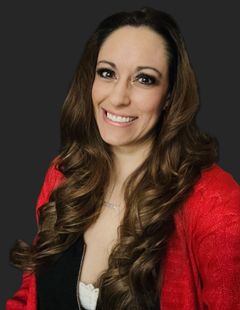Last Updated May 10, 2024 (originally published February 26, 2019)
The “standard” image of an exercise professional is constantly evolving, much like the fitness industry itself, and concerns regarding body image abound. This is due, at least in part, to the fact that building a better, more efficient and higher-performing body is part of the business of fitness. On the other hand, fitness isn’t just about the physical body—at least it shouldn’t be.
Unfortunately, questions like, “how should a personal trainer look?” and “what is the ideal physique for personal trainers?” are still commonly heard in gyms and around the industry.
In an article entitled Body Image and the Fitness Industry, fitness expert Amanda Vogel argued that “body image issues in the fitness industry are nothing new. But the need for a more positive philosophy and more diverse perceptions of beauty is especially relevant right now. With rising competition from fitness technologies, social media stars who plug fitness, TV trainers and an increasingly crowded marketplace within our own communities, a nice body can (and should) only get you so far in this industry.”
This brings us to the heavily debated question: “What should a personal trainer look like?” Other intriguing questions are offshoots of this debate, including:
-
What makes a personal trainer successful?
-
What makes a personal trainer qualified and valuable?
-
Is the way a personal trainer looks directly related to client success?
-
Is it a realistic and fair expectation that all health and exercise professionals have a perfect physique?
-
What does perfect even mean?
Judging by past definitions and images of “perfection,” no one really knows. So, why should we care?
Fitness experts will agree: A perfect body isn’t necessary to be a professional in the health and fitness industry or to be successful in the industry. This opinion, however, is counterintuitive to the images portrayed in industry advertisements, social media and marketing materials. Images of the stereotypical chiseled, six-pack abs on scantily clad bodies dominate the visual images to which we and our clients are exposed.
Consequently, it is more the rule —rather than the exception—for a client to make assertions such as, “I want to have a six-pack” or “I want to get a perfect body by next summer.” It’s also not unusual for health and exercise professionals to place the same pressure on themselves to “look” the part. What’s interesting is that the majority of health and exercise professionals do not make outward appearance a top priority when working with clients. Instead, their focus is on helping their clients build healthier lifestyles.
So, why should we, as the professionals, place pressure on ourselves to obtain and maintain a so-called perfect body when no one knows what that means?
In her article, Vogel argued that the change has to begin with us. Chris Gagliardi, MS, ACE Scientific Education Content Manager and ACE Certified Personal Trainer, agrees: “The perfect body is the one you are confident in. We cannot equate physical appearance with knowledge, competence or professional effectiveness. It’s time we, as both an industry and individual professionals, acknowledge that healthy looks different for and on everybody.”
How can we help our clients develop body confidence and body pride if we ourselves are incapable of doing the same?
Perhaps the best question to ask isn’t what a personal trainer should look like, but what a personal trainer should be like. Being a personal trainer is not about fitting into some cookie-cutter, air-brushed, photo-shopped image. It’s about character, integrity, passion and knowledge. Furthermore, success as a personal trainer is not dependent upon the presence or absence of some idealized physical attributes that most people are unlikely to possess. We need to recognize that our thoughts and words have tremendous power. We also must start placing the focus on what really matters—the individual and the contributions they make to the fitness industry. The sum total of a health and exercise professional’s contribution will not be their body. If that’s how we see it, we are, quite sadly, adrift in our mission.
If you’ve ever attended a professional fitness industry conference or workshop, you’ve likely noticed that the images you see in advertisements do not accurately portray the professionals in attendance. Exercise professionals look different from each other and that’s O.K. That’s authentic. That’s real. We are role models. We are leaders. We are influencers. Let that be the mark we leave and be judged upon—not a size or number on the scale.
What should a personal trainer look like? Like you. Like me. Like each of us in our individual and imperfect glory. That’s what we look like.
If you are interested in learning more about how to become an ACE Certified Personal Trainer, check out these great resources:
-
How to Become a Certified Personal Trainer: Here, you’ll find a 3-step process to becoming a personal trainer and launching a long and rewarding career in the health and fitness industry.
-
Achieve Lasting Success as an ACE Certified Personal Trainer: This page walks you through the process of choosing the study program that best aligns with your needs and learning style.




 by
by 









